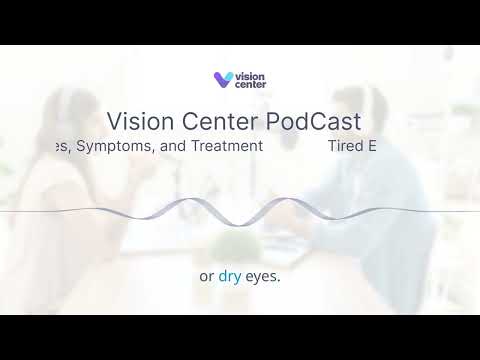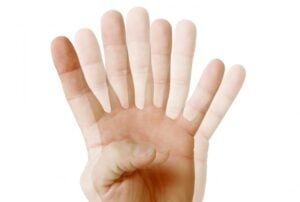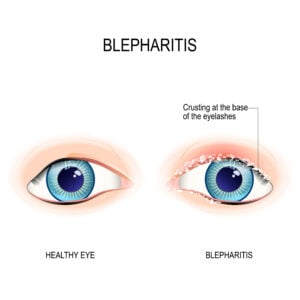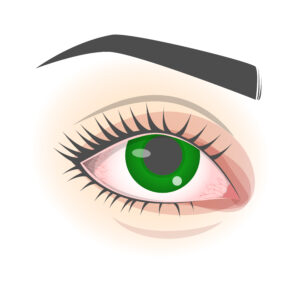Tired Eyes (Eye Fatigue)
Eye fatigue is a common condition caused by overworked or strained eyes. Your eyes use extraocular and ciliary muscles to function correctly.1 These muscles require some rest to function optimally.
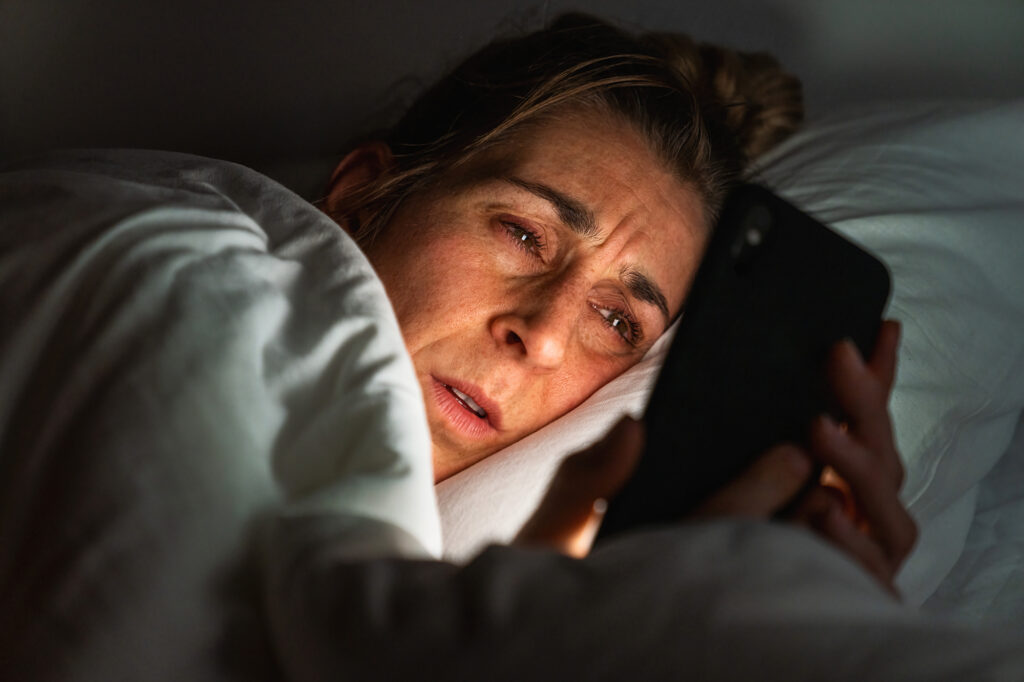
Although eye strain may be unpleasant, it’s usually not serious and should go away once you rest your eyes or take certain measures.
Potential Causes of Tired Eyes
The following can cause tired eyes:
- Reading for extended periods
- Driving long distances
- Extended screen time (digital eye strain)
- Straining to see in dark or poorly lit surroundings
- Exposure to bright light
- Activities requiring strong focus
- Being stressed or fatigued
- Dry moving air, like an air conditioning, fan, or heater
- Underlying eye-related conditions, like uncorrected vision or dry eyes
Other Symptoms of Eye Fatigue
Symptoms of eye fatigue may vary depending on the severity. The most common include:
- Eye irritation
- Sore, dry, or watery eyes
- Incapability to focus on objects
- Headache
- Blurred or double vision
- Dizziness
- Double vision (diplopia)
- Difficulties in concentration
- Increased sensitivity to light (photophobia)
- Body pains (neck, back, and shoulder pain)
- Trouble in keeping your eyes open
- Slowed productivity
Persistent problems or severe symptoms, such as extreme dizziness, twitching muscles, migraines, or nausea, could indicate a vision deficit.
They may also arise from severe asthenopia (eye strain), necessitating professional intervention or lifestyle changes.2
Listen In Q&A Format
Tired Eyes Eye Fatigue: Causes, Symptoms, and Treatment
Vision Center Podcast
Health Risks of Eye Fatigue
Eye fatigue can be annoying and uncomfortable, but no evidence links it to serious or long-term consequences.
Most cases of eye fatigue resolve on their own unless caused by eye muscle imbalance, uncorrected vision, or other diseases.
Treatment for Tired Eyes
There’s no specific treatment for tired eyes. However, medical attention may be required if the symptoms persist or worsen.
Your doctor will recommend treatment based on the cause. Treatments may include:
- Contact lenses and glasses. To improve focus and prevent straining.
- Prescription eye drops. To hydrate the cornea and prevent irritation.
- Refractive surgery like LASIK for those unwilling to use glasses and contacts.
Home Remedies
You can manage eye fatigue symptoms at home by doing the following:
Rest Your Eyes
Rest is the basic remedy for tired eyes. You can relax your eyes by taking a short nap.
According to experts, at least 5 hours of sleep per night will allow your eyes to replenish. However, endeavor to have enough sleep (7 or more hours). Gentle eyelid massages will also relax your tired eye muscles.
Warm Compress
Apply a warm damp washcloth on your closed eyelids in 5-minute sessions. Doing so will relax your eye muscles. Warm compress also enhances tear production, providing soothing relief to tired, dry eyes.3
Improving The Air Quality Of Your Space
You can improve the air quality in your space using an air cleaner and a humidifier. Avoid direct air from moving fans, air conditioning vents, or space heaters, as this can cause dryness.
Over-The-Counter Eye Drops
Lubricating eye drops such as Visine Tears and Systane can provide instant relief to tired eyes caused by wind or extended screen time.
When to See a Doctor
See an eye doctor immediately if you experience persistent eye fatigue or severe pain. Your doctor will perform tests to rule out any underlying medical condition. They will also inform you of the best ways of treating tired eyes.
Tips for Preventing Eye Fatigue
Try these helpful tips to prevent eye fatigue and alleviate overall eye strain:
Limit Screen Time
Extended screen time can result in computer vision syndrome (CVS). CVS includes visual symptoms like eye irritation, blurriness, headaches, dry eyes, etc. Estimates show a prevalence of 50% or more among computer screen users.4
To prevent eye strain, place your screen at least 20 inches away from your eyes and a little below eye level. You can increase the distance based on your screen size.
Periodic breaks from your screen will give tired eye muscles time to recover. The American Optometric Association recommends the 20-20-20 rule,
For every 20 minutes spent looking at a screen, look at something 20 feet away for 20 seconds.9 Increasing the font size and using a glare filter for your screen can also prevent overworking your eyes.
Take Breaks While Driving
Frequent eye movements and glare from street lights and oncoming vehicles can strain your eyes, making it difficult to concentrate.
Pull over to take a break and rest your eyes if you’re driving long distances. It’s also advisable to adjust air vents not to blow directly into your face as this may cause dry eyes.5
Change Your Lighting
Adjust your lighting when doing tasks like reading to reduce glare. Using ambient light (soft light) instead of bright overhead lighting can prevent eye fatigue because the light is spread uniformly across the room.
Position the light source behind you when doing close work and direct the light onto your task, not your face. Dimmable overhead lighting is recommended when watching TV.
Wear Protective Glasses
A break from your computer screen, eye drops, or light changes might not relieve tired eyes. In this case, specialized eyewear such as blue light glasses or sunglasses can prevent excessive blue light exposure from the sun and digital devices from harming your eyes.
Computer glasses work better than contact lenses because they don’t dry up when the blinking frequency is reduced.
Use Artificial Tears
Over-the-counter artificial tears such as Refresh Plus can keep your eyes lubricated all day.
You can use artificial tears before sitting in front of a screen or doing other eye-straining tasks. Preservative-free artificial tears are the best option for maintaining healthy eyes.
Drink Water
Tired eyes may experience some dryness. To prevent this, drink enough water to hydrate your entire body and help your eyes make tears.
The National Academy of Medicine recommends a daily intake of 13 8-ounce and 9 8-ounce cups for men and women, respectively.6 The ideal intake for children and young adults is 6 to 8 cups daily.
Blink Often To Refresh Your Eyes
According to research, concentrating on visual tasks reduces blinking frequency.
Insufficient blinking during extended screen time exposes your eyes to dry air and enhances tear evaporation.7 This causes irregularities on the corneal surface, resulting in blurred vision and irritated eyes.
Frequent blinking helps to redistribute and replenish the tear film. It also rids the eye surface of any debris.
Make Critical Lifestyle Changes
If you frequently experience eye fatigue, implementing some lifestyle changes can help resolve or prevent a worsening condition.
Regular checkups and healthy eating habits can significantly improve cell, muscle, and nerve health. Foods rich in lutein, zeaxanthin, and vitamin C are the best options.8
Summary
- Eye fatigue is a common condition where the eyes get tired from extended use.
- Eye fatigue is most common in people older than 50 but can affect people of all ages and genders.
- Common symptoms of eye fatigue include sore eyes, watery eyes, blurry vision, sensitivity to light, dizziness, and double vision.
- Some home remedies such as warm compress, hydration, and artificial tears can help alleviate the symptoms.
- Treatment for eye fatigue may include contact lenses, glasses, prescription eye drops, refractive surgery, etc.
- Resting your eyes and limiting your time in eye-straining activities is the best way to manage tired eyes.
In this article


